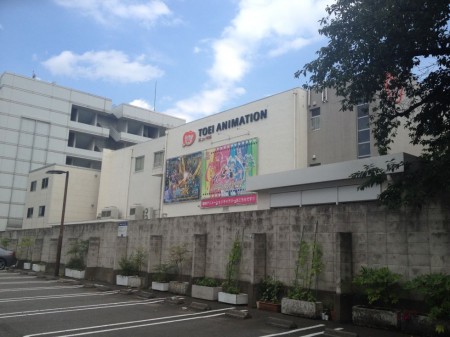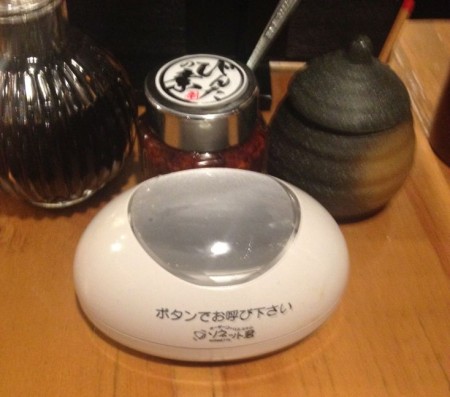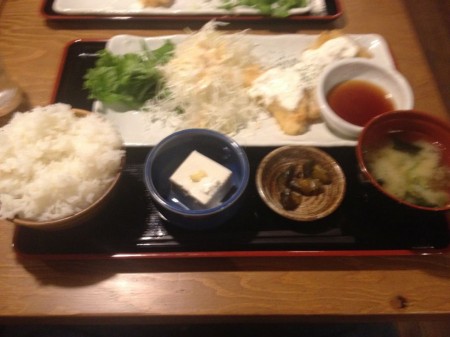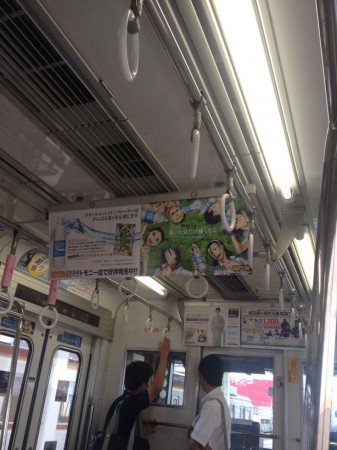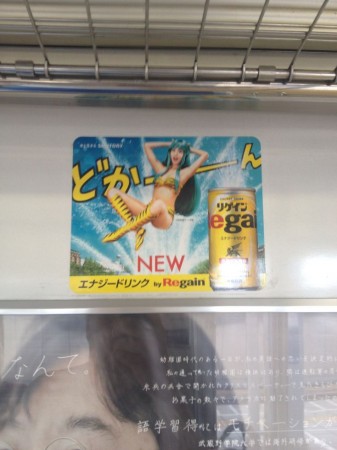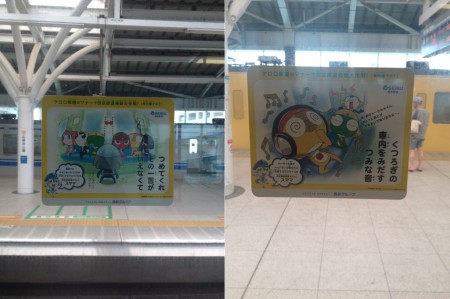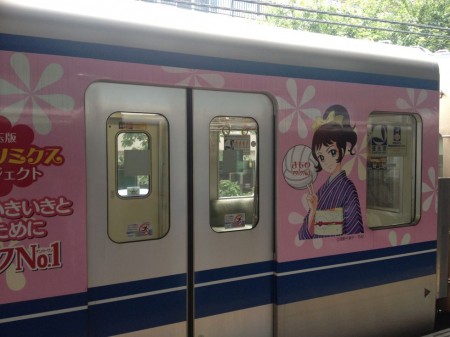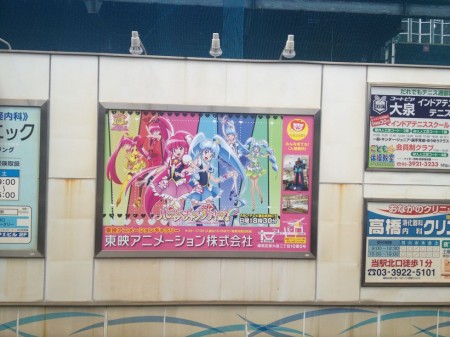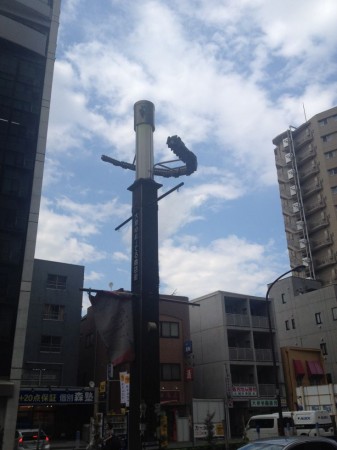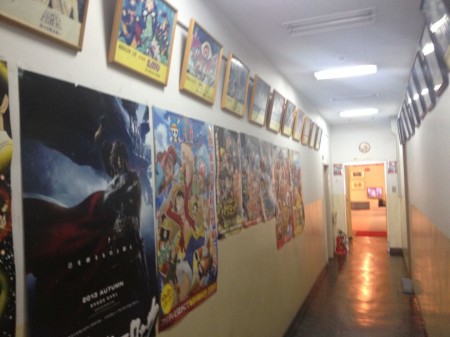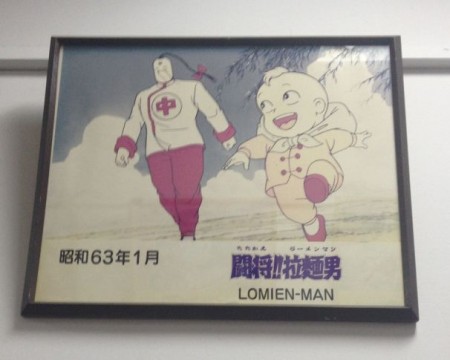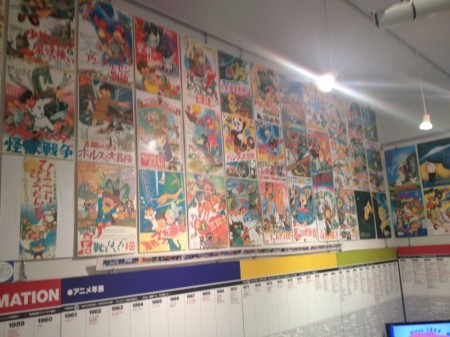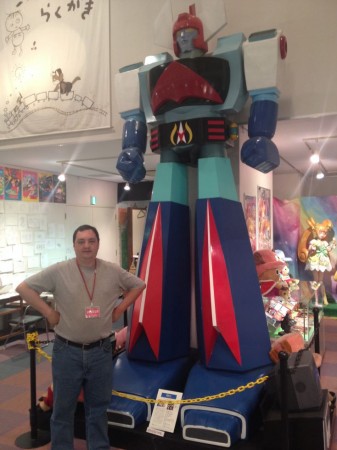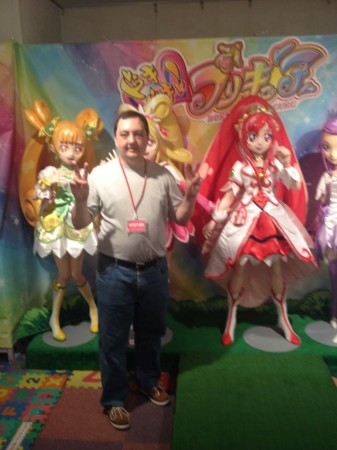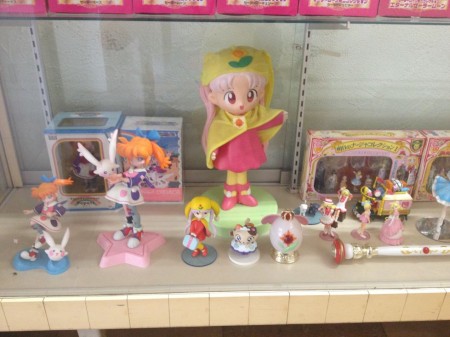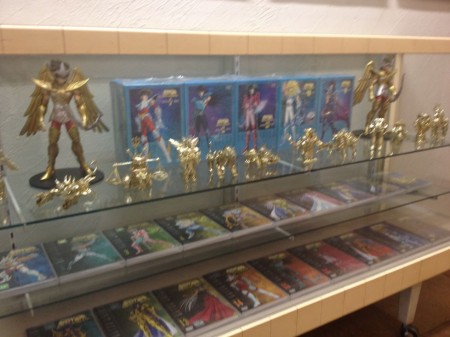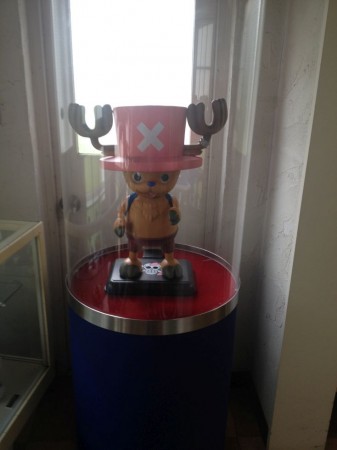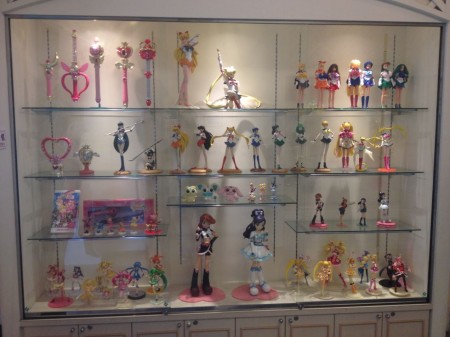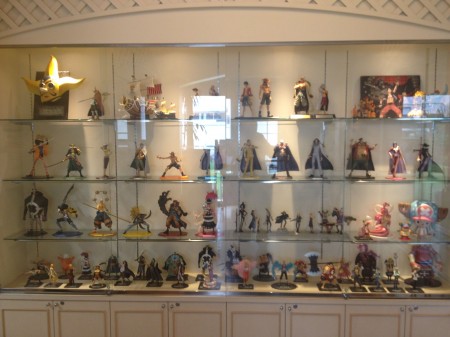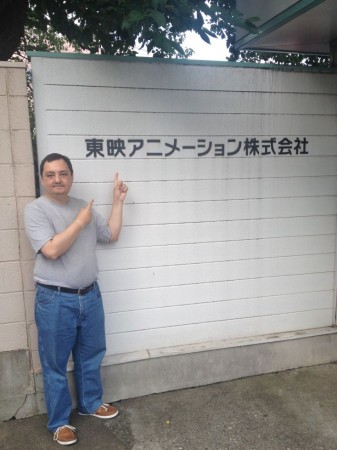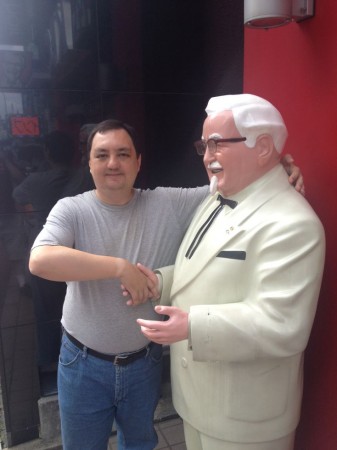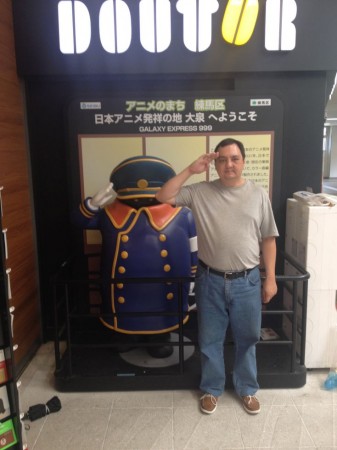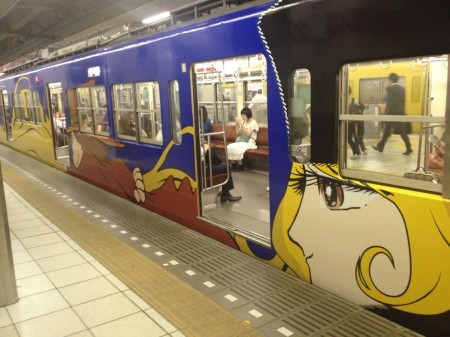Tokyo Revisited Day 10
The primary point of coming to Tokyo for slightly over two weeks is to allow time for a variety of activities and sightseeing. Given the intensity of my collecting obsession, I could happily spend my entire trip exploring only Nakano Broadway & Akihabara. In fact, every time I go to either place, I seem to discover new anime shops that I haven’t visited before. But I also want to expand my experience (and conserve some money), so I decided to visit the free Toei Animation Gallery.
Although I woke shortly after sunrise, as usual, morning hygienic routine and chronicling the prior day’s activities for Internet readers occupied the morning. Jon & I left his apartment at lunch time, making our way to a local basement restaurant that specialized in fried chicken dishes. The sizeable restaurant had wood tables and short-backed chairs, and had covers of 1950’s Japanese pop-culture and manga magazines randomly glued to the walls, giving the place a pleasant, nostalgic atmosphere. After selecting our meals from the menu, Jon pressed the waitress call button on the table.
My chicken nanban lunch set arrived with four pieces of lightly battered fried chicken topped with tartar sauce, shredded lettuce topped with Thousand Island dressing, and sides of “tsukemono” (pickled pickles), tofu, miso soup, and unlimited white rice. Since I requested extra rice, my bowl arrived piled extra high. The lunch was served with green tea. We asked for extra glasses of cold water. The tasty meal was quite enough food to be satisfying.
The Chuo Rapid JR line took us to Shinjuku, where we took the Yamanote line to Ikebukuro station before walking across the station to the Seibu train lines platform. The Seibu-Ikebukuro Local line took 24 minutes to take us to the top of Nerima ward, the northernmost edge of Tokyo, but felt like much longer due to its stops at numerous intermediary stations. While on the train I noticed that alternating windows on one side of the train were adorned with Keroro Gunso stickers that explicated good train etiquette, such as not hogging seating, being considerate of elderly passengers, and not talking loudly enough to disturb other passengers.
When we, at last, arrived at the Oizumi-Gakuen Station, I noticed upon exiting our train that its exterior was adorned with Attack No. 1 imagery.
On the embankment opposite the rail lines was a billboard advertising the Toei Animation Gallery. The interior of the station had multiple hanging Galaxy Express 999 banners.
We exited the station by taking the escalator down to the street. After a few blocks’ walk, we encountered a tall column on the sidewalk. A small statue replica of the Galaxy Express 999 space train circled the top of the pillar.
Much like Mitaka, the Higashi-Oizumi ward is a tightly packed combination of commercial and residential neighborhood with a homely, pleasant atmosphere that doesn’t feel rushed or metropolitan. The walk from the train station probably took Jon & me about 15 minutes. At last, as we approached a large mall complex with a T-Joy theater, on a street leading diagonally off to our right, just after a corner farmer’s market, we spotted the Toei Animation Headquarters. The Toei lot is two three story buildings. As we approached, the security guard in the guardhouse before the small parking area waved us over, asked us to sign in, and handed us both red “Visitor” lanyards. He instructed us to enter only the first floor of the closer of the two buildings.
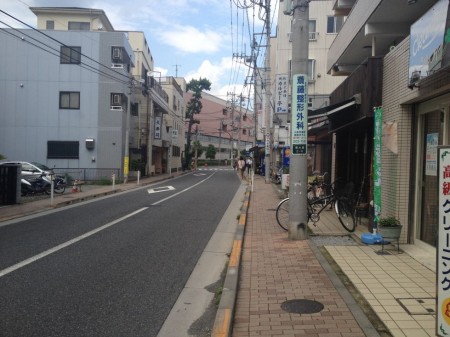
The lobby has another security guard sitting in an office to the left, a stairway on the right, and a display case with Galaxy Express 999 LPs next to a lengthy hallway that leads to the gallery space. The hallway is lined with framed images detailing the production history of the studio. The left side of the hallway also leads to a large “production staff” room.
The end of the hallway has a right turn and also opens up into the primary gallery space. The Toei Animation Gallery isn’t so much a museum as an unmanned visitor center. The walls are adorned with publicity photos of past Toei productions and a timeline of select TV anime up to 2013. Glass cases contain vintage production art and surviving animation cells from early works including Shonen Sarutobi Sasuke and Hakujaden, and Okami Shounen Ken, as well as blueprints for the original Toei Animation building. The gallery space had a number of “no photography” placards posted, but since no one was around to enforce the rule, I surreptitiously snuck a number of photos anyway.
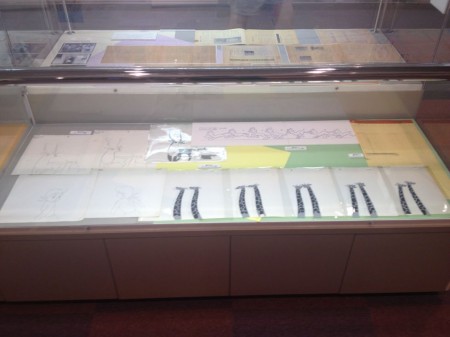
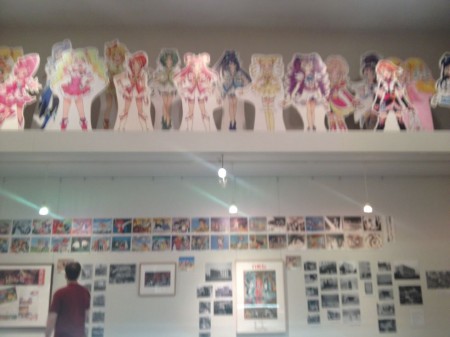
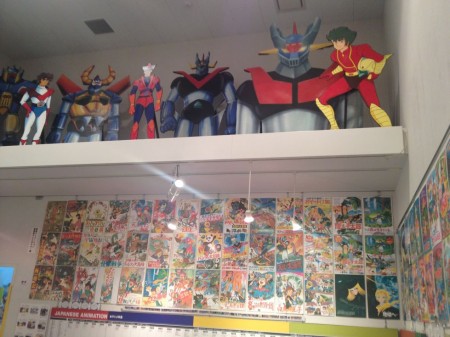
The display area is observed by a 15-foot Danguard Ace statue just around the corner from life-sized statues of the Doki Doki Precure cast. To the left is a small recreation of a typical late 1950’s Japanese living room with a black & white TV playing early Toei anime.
The two rooms to the right of the hallway contain display cases filled with select Toei character figure toys. The first case is filled with St. Seiya figures. Beside it is a case with children’s shoujo figures including figures from Crayon Okoku and Fun Fun Pharmacy. The next case spotlights a life-sized Tony Tony Chopper figure next to a case of literal Tiger Mask masks and Mazinger-Z figures. The adjacent walls contain a display of Sailor Moon & Pretty Cure figures facing two walls of One Piece and Dragon Ball figures.
Jon & I both departed quietly, a bit disappointed that the “gallery” at Toei’s Headquarters isn’t more extensive or substantial than it is, but still pleased that we made the trip. I stopped for a snapshot next to the studio’s nameplate as we walked away.
On the way back to the station, we stopped in a sprawling Aeon liquor store. Jon informed me that public drinking is legal, so, not being much of a beer drinker, I purchased a 200 yen (with tax) hard apple cider to consume during the remainder of the walk back to the train station.
Upon returning to the station, we noticed the life-sized statue of the Galaxy Express 999 conductor, the official mascot of the Oizumi-Gakuen Station. So I again stopped for a photo opportunity.
I was just a bit giddy to see that the train that pulled up to the station for us was completely adorned with Galaxy Express characters.
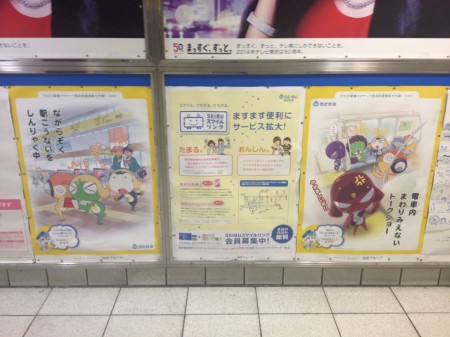
On the way home, Jon suggested leaving the station at Shinjuku to rent discs from the Tsutaya store. On the 7th floor, I picked out the three DVD volumes of Toei’s obscure delinquent action/comedy OVA series Yankee Repputai, the 1986 Tobira wo Akete OVA, and the DVD release of the 2004 Pugyuru TV series. Disc rentals are only 108 yen per disc for three days. Jon picked out two VHS volumes of Minky Momo bonus episodes that appeared to be excluded from the DVD release. The Tsutaya website claims that select stores carry the 2009 Yonimo Osoroshii Grimm Douwa OVA, but we couldn’t find it at the Shinjuku store. We returned home where I copied the discs. I’m aware that copying Japanese DVDs is both unethical and illegal, but I justified my action by rationalizing that none of the titles I rented are available on commercial American home video, and I more than sufficiently compensate by financially contributing to the anime industry in other ways.
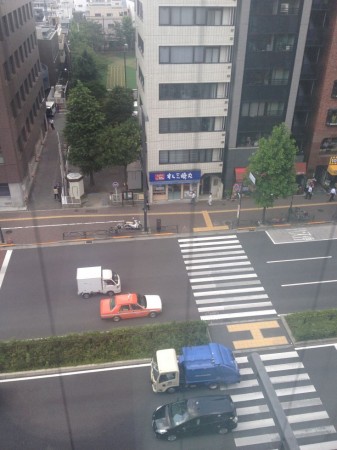
For dinner we walked across the street (and I forgot to bring my camera) to a small, “cheap” sushi restaurant. An appetizer of two fried fish cakes and two rectangular plates of ten assorted sushi was 3,067 yen including consumption tax. Jon referred to the sushi as “mid-level quality.” I thought it all ranged from good to excellent in taste. The dinner was my first time tasting salmon roe sushi. I ended up eating Jon’s piece as well, as he explained that he doesn’t like roe sushi. I now understand why. The salmon roe sushi is a simultaneous mix of flavors and palate experiences. The sushi initially has a smoky flavor, but the soft, bulbous eggs in the mouth feel unlike anything else – a fairly unsettling sensation. Biting into the eggs releases a burst of silky liquid that dramatically contrasts with the rough, firm texture of the seaweed wrap. It is a testament to Japanese cuisine that such as small piece of food can arouse such a diverse, immediate variety of tastes and sensations.
